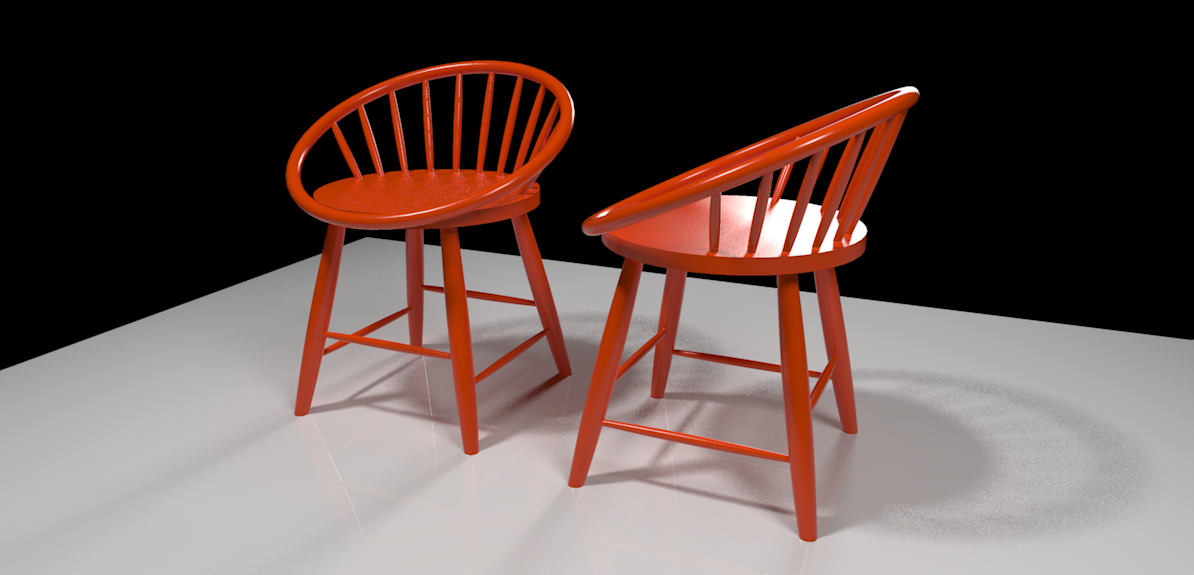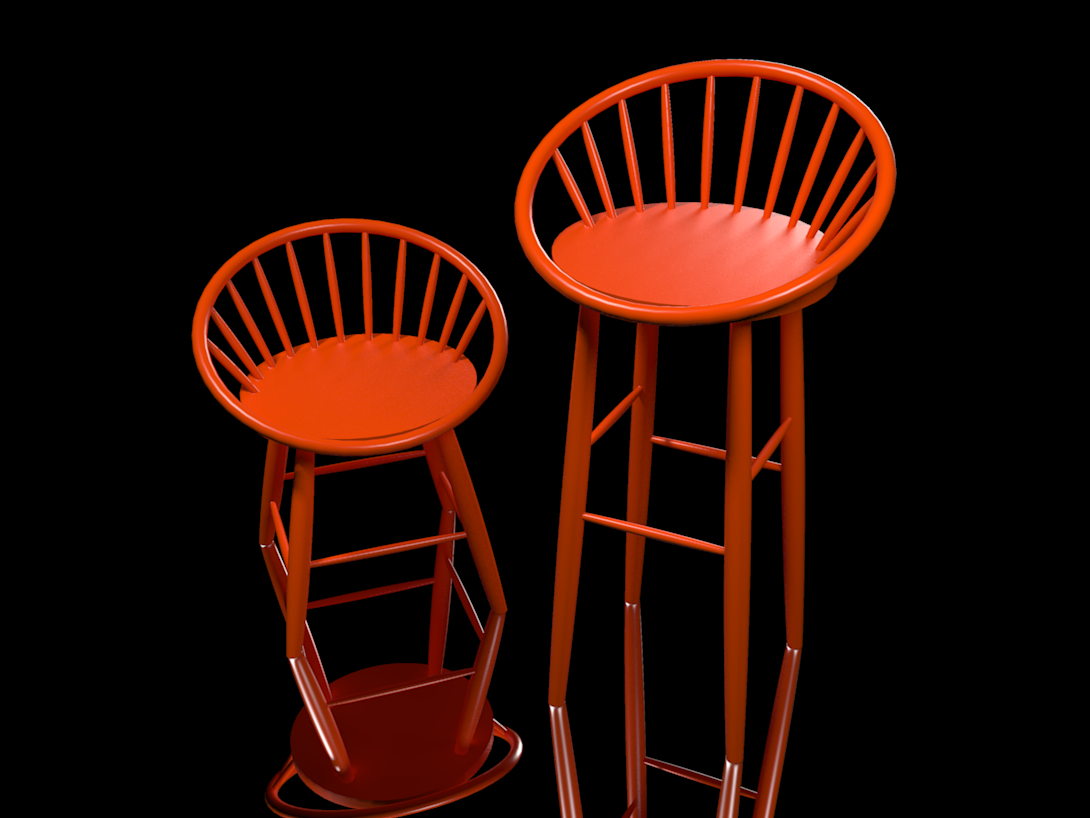Simple Orange Chairs
-

This is a chair I drew loosely based on a photo supplied by one of our members. He asked me for a hand in drawing the seat and backrest assembly. I did a tutorial here in case anyone is interested. I don't know the provenance of the original chair so I can't give credit for it but I guess this would be a variation on a Windsor chair.
-
Wonderful.
-
Thank you, sir. I think a tall version of this chair would be pretty cool, too.

-
Very cool but not sure that is very comfortable?

-
You might have to sit on it to find out. It's certainly not a lounging chair. It's based on an existing chair but I've only seen a photograph of it and not the real thing.
-
Great video Dave, very clear and easy to follow.
One thing though... you make each spindle unique, then open each one and scale. You have effectively turned each entity into a group.
Wouldn't it make more sense to scale each spindle component without opening it. Then they all remain one component for texturing etc. -
Hi Barry. Thank you.
Making each spindle unique doesn't actually make them groups and in the end there are pairs of them except for the center one. The spindle instances all show up in the In Model Component library so if they were wanted later, they'd still be available. If the components got scaled instead of their definitions (scaled without opening) that wouldn't change the definition. Of course by leaving them all instances of the same component you could open one and apply the texture to the faces resulting in all of them getting textured but then the texture would get scaled in the other instances. I'd rather not have that happen.
If I were to continue with this model and make a building plan, I would want to show six spindles of different lengths. As they are made, I can pull out a copy of each one from the In Model component library and quickly place them in a row for dimensions and such. Since I made the first spindle a component and set its axes in a logical location, I have an easy way of placing the copies where I want them.
-
Yes that makes sense, especially when you need to go to a building plan.
-
In all likelihood, if it was just a model for rendering, you could probably get away with scaling the components instead of the definitions. At least in the case of the spindles for this chair, you probably wouldn't be able to tell that the texture would be scaled along with the components. Still, I prefer not to teach those kind of shortcuts because people wind up using that in the wrong place.
I remember finding a model of a workbench in the 3D Warehouse a few years ago. The author opted to draw a single rail component which he then scaled to make the other rails in his model. It looked fine until you examine it closely. Then you discover that tenons got scaled inappropriately and holes that are round in some places are elliptical in other places. Generally I would consider that sloppy modeling because it introduces all sorts of errors that are easily avoidable.
-

Advertisement







